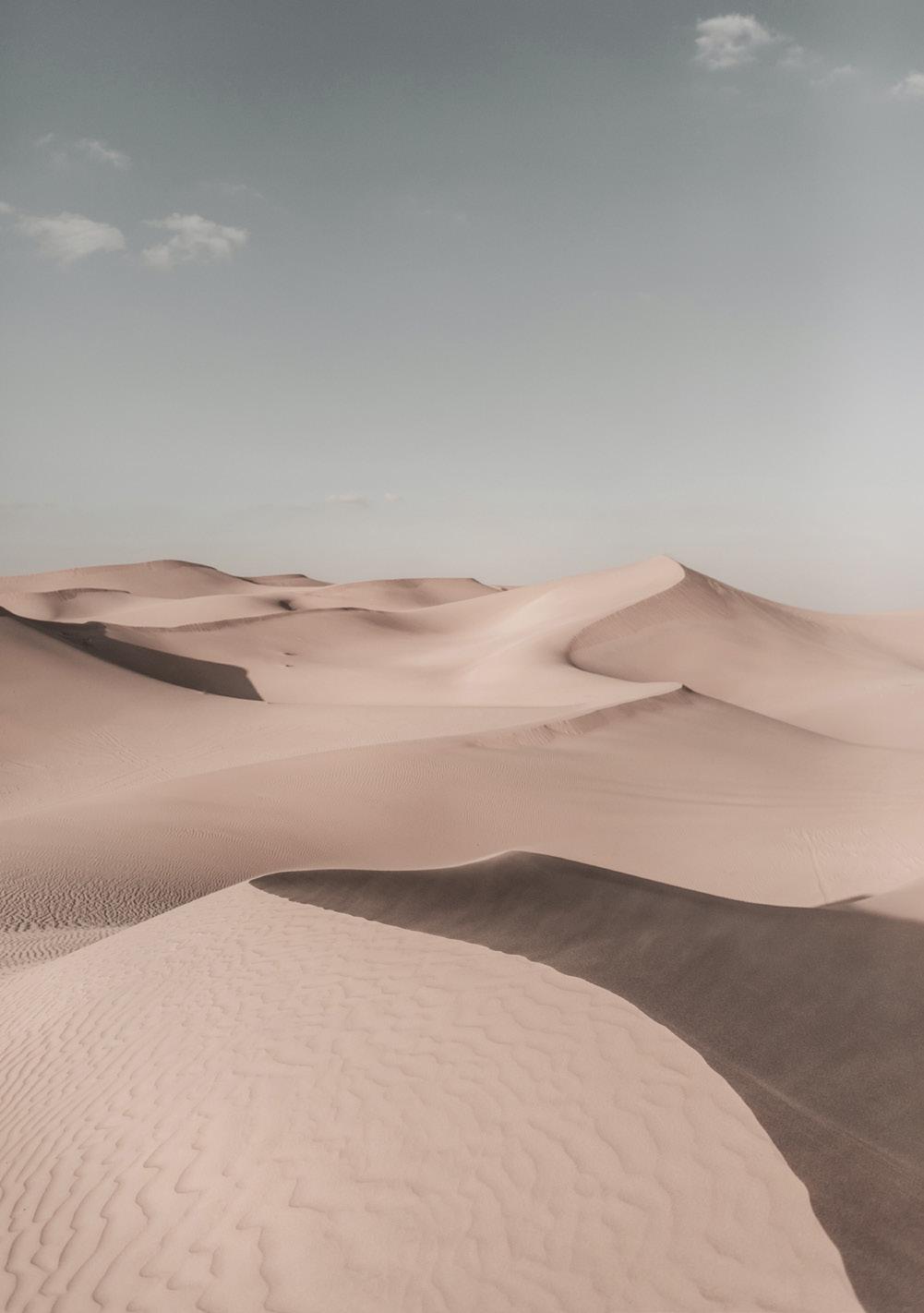
1 minute read
QUADRILLION
from AEOLIAN - AADRL
by Salim Hilles
II)
Wind
Advertisement
The shaper of the desert, wind plays a large role in the desert, crafting the shapes of dunes, moving sand particles to great distances, and the main catalyst/parameter of the overall phenotype that is the desert. Wind is also the driving force of soil erosion, a natural process where soil is transported from one location to another. When fields of soil are damaged, it does so abundantly, desertifying landscapes.
III)
Heat
High temperatures mark the deserts, creating extreme environments where it becomes incredibly difficult for any form of life to thrive. Among all biomes, rainfall is least in deserts, giving it a vital characteristic of dryness. Allowing the desert air to become very cool at night as heat escapes the sands. Extreme conditions enables species to evolve and adapt. Extreme heat allows for adaptation. Plants and animal that do live in the desert acquire special adaptations to survive in such an environment. For example, most animals living in deserts are nocturnal, and stay beneath shades or remain buried underground during the significant heat of the day time. They develop efficient strategies for water conservation and extraction or simply remain in a state called “dormancy”.










